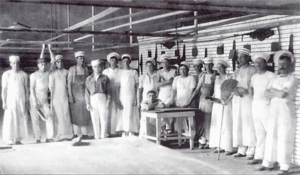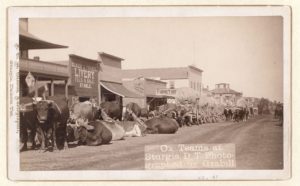James Harrison Smith was born on April 9, 1848, in Madison, Indiana. He was a Private in Company G and one of three James Smiths in the Seventh Cavalry at the time. He was the only one of the three who was present at the battle. The other two who shared his name were killed with Custer’s Column and are buried on Last Stand Hill.
Morris Mason Farrar died in Philadelphia, Pennsylvania, on April 9, 1899, and was buried in Holy Cross Cemetery in Yeadon, Pennsylvania. He was a Private in Company E who participated in the hilltop fight.
![]()
Henry W. B. Mechlin died on April 10, 1926, in Washington, D.C., and was buried in the U.S. Soldiers’ Home Cemetery there. He was a blacksmith in Company H who participated in the hilltop fight. He was later awarded the Medal of Honor for his actions there.
Robert Rowland died near the Cannonball River, North Dakota, around April 11, 1879, of an apparently self-inflicted gunshot wound in his head. He was a Private in Company G who was not present due to detached service at the Powder River Depot.
William E. Robinson was born on April 12, 1842, in County Down, Ireland. He was a Private in Company M who participated in the valley and hilltop fights.
Henry M. Brinkerhoff was born in Gettysburg, Pennsylvania, on April 12, 1854. He was a Private in Company G who participated in the valley and hilltop fights.
John McShane died at Fort Abraham Lincoln, Dakota Territory, on April 13, 1877, and was originally buried in the Post Cemetery there and later reinterred in the Custer National Cemetery in Montana. He was a Private in Company I who was with the pack train and participated in the hilltop fight.
Joseph H. Green died on April 13, 1922, in Washington, D.C., and was buried in the Soldiers’ Home Cemetery there. He was a Private in Company D who participated in the hilltop fight.
Patrick Carey was born on April 14, 1828, in Tipperary, Ireland. He was a Sergeant in Company M who participated in the valley and hilltop fights.

John Dolan (left), who was also known as Thomas Brown, was born in Dublin, Ireland, on April 14, 1843. He was a Private in Company M who was not present at the battle due to detached service.
John W. Sweeney died in Kentucky on April 14, 1884. He was a Private in Company F who particpated in the hilltop fight.

